Underrated 1950s Film Noir: 15 More Classic Gems Deserving An Audience
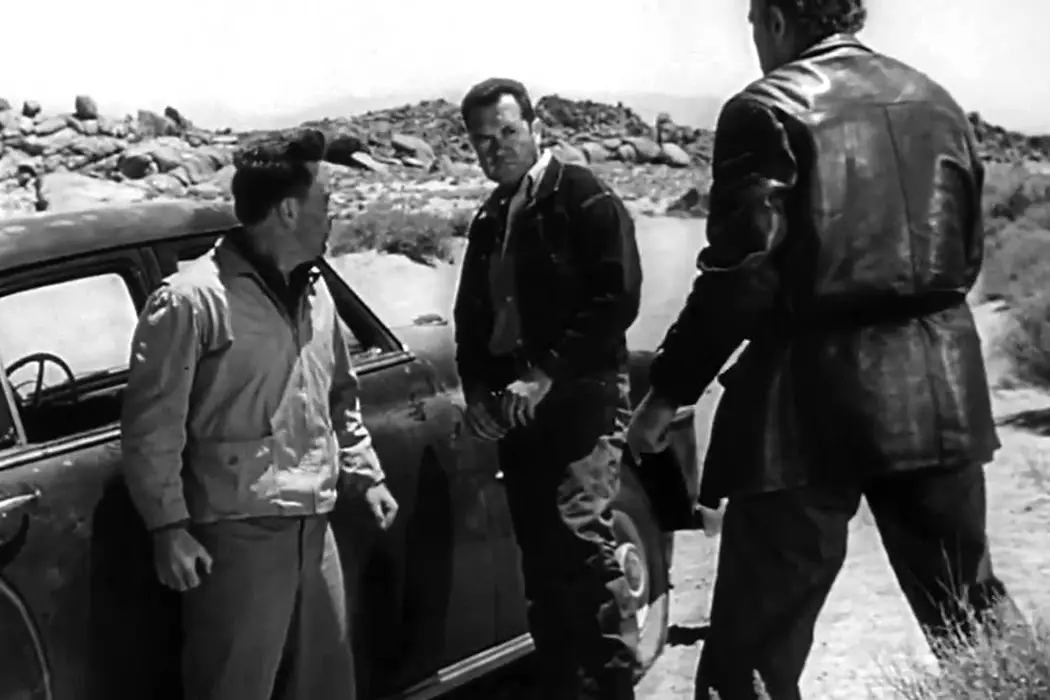
Tynan loves nagging all his friends to watch classic movies…
Our exploration of film noir continues with what Paul Schrader described in his essay “Notes on Film Noir” as the “period of psychotic action and suicidal impulse.” Generally speaking, with the beginning of the 1950s, “the noir hero, seemingly under the weight of 10 years of despair, started to go bananas.”
If you did not get a chance to peruse Part I, featuring 15 film noir gems from the 1940s, I would encourage you to start there. However, here are 15 more films curated from the 1950s, generally considered to fit the loose parameters of the film noir style. Let me reiterate that this is not a list of the best classic noir films of all time. It is simply an imperfect, utterly incomplete attempt to shed some deserved light on a few underrated movies from the dark genre. You’ve been warned…
D.O.A. (1950)
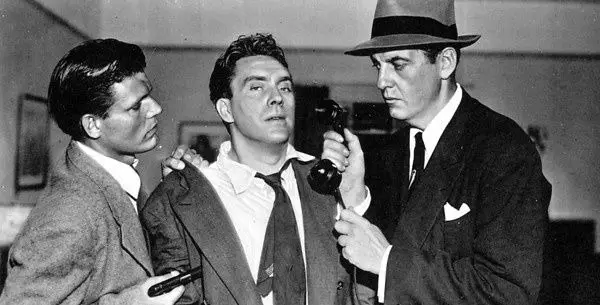
It’s the ultimate hook. In an extensive tracking shot, Frank Bigelow doggedly stumbles his way to the police station to call in a murder: his own murder! Although it has the ultimate gimmick, thanks to the plucky charisma of lead Edmond O’Brien, on-location shooting, and a bewildering conspiracy, D.O.A. has been galvanized as a genre classic. Being in the public domain for some years hasn’t hurt either. Neville Brand, in particular, makes a startling impression as the henchmen terrorizing Bigelow through the streets of San Francisco. D.O.A. is a fitting embodiment of post-war paranoia in the ensuing Cold War era.
Woman on The Run (1950)
Ann Sheridan gives one of the finest performances of her career as a scorned wife whose husband has fled for his life. With the police poking around asking all sorts of questions about their runaway witness, Sheridan meets their inquiries with a detached apathy, even as she realizes her spouse’s life is in grave danger. Robert Foster‘s movie is capped with a climactic roller coaster finale, and the on-location footage of mid-century San Francisco lends a lovely atmosphere to this slice of real-world noir.
Cry Danger (1951)
This is a trailer park noir, with Dick Powell playing a riff off his old Philip Marlowe persona. Despite the meager resources, what the picture has is snappy dialogue provided by William Bowers and an impeccable cast to deliver every word. We must start with Powell and go down the line to Richard Erdman, Jay Adler, and of course, William Conrad playing his usual ominous heavy. One of the “Queens of Technicolor,” Rhonda Fleming makes quite the noir siren too, even in black and white.
The Prowler (1951)
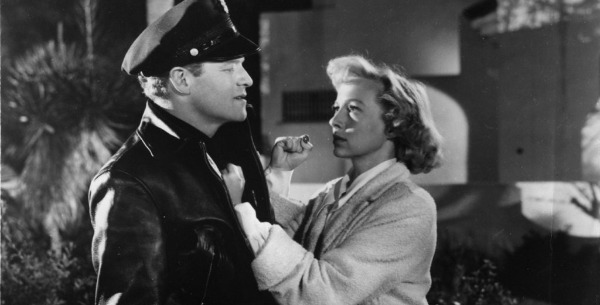
The ever-prolific screenwriter Dalton Trumbo churned out this low-grade beauty while he was on The Hollywood Blacklist, no less. In an opening title sequence doubling as exposition, a peeping “phantom” looks in on a scandalized woman (Evelyn Keyes) who screams to high heaven. Minutes later a police patrol is on her doorstep including Van Heflin, ready to come to her rescue. Though married, she soon finds herself falling for this handsome cop. As one can easily imagine, The Prowler devolves into a sordid drama worthy of James M. Cain.
His Kind of Woman (1951)
Howard Hughes‘ meddling hands were all over the films of RKO during his reign, and it was no different with this picture. Though the plot is tied very loosely together, we can conveniently chalk it up to the ambiguity of noir. The real reason to watch this movie, set below the border at a seaside getaway, is definitely the talent. Robert Mitchum and Jane Russell have white-hot chemistry together. However, the true secret weapon unleashed on the narrative is an egotistical actor played by Vincent Price, who meets the foreboding tones of noir with a delightfully hammy performance.
The Narrow Margin (1952)
Finding the perfect sweet spot between economy and genuine dramatic tension, The Narrow Margin is one of the undisputed high points of B noir. Blessed with the always inventive direction of Richard Fleischer and a taut script from Earl Fenton, Charles McGraw falls capably into this paranoid police thriller aboard a train. The prize everyone seems so intent on snagging is the moll of a gangster who has agreed to testify. Her safety is of the utmost importance. But of course, the streets and platforms are swarming with shifty characters. Nothing is as it seems.
The Sniper (1952)
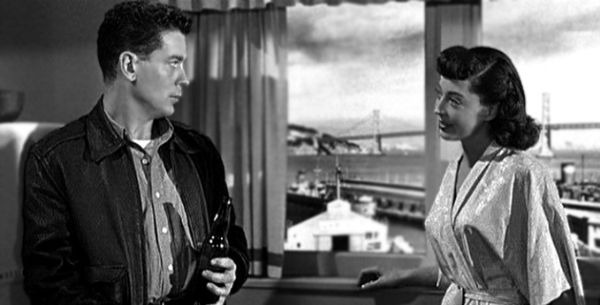
Although this is a joint Edward Dmytryk and Stanley Kramer social message movie, for its first half, The Sniper is all intensity, documenting the pent-up rage inside an unstable San Francisco laundromat worker (Arthur Franz). The picture does a fabulous job getting inside his psyché even to the point of evoking sympathy. But the maddening voices in his head become unbearable. Once more the rooftops of S.F. become a formidable environment for harrowing drama with a crazed psychopath on the loose, still harboring a searing hatred of brunettes, as the police look to apprehend him.
99 River Street (1953)
I always rued the fact John Payne didn’t have a more illustrious career, and then I discovered his work with Phil Karlson and never felt bad again. Because with a pair of gritty gems, including Kansas City Confidential and 99 River Street, they were able to realize a seedy world cloaked in darkness and punctuated by utter calamity as much as brutal fisticuffs. In this story, Payne is a disgraced boxer whose wife is seeing another man. When she gets murdered, our hero is left holding the bag, forced to exonerate himself. In such an unfeeling urban jungle, Evelyn Keyes is the one bright spot.
The Hitch-Hiker (1953)
In another more enlightened world, we wouldn’t have to make this distinction. But let’s dispel any pernicious rumors that a woman could not direct a pulse-pounding noir. Because not only was Ida Lupino a phenomenal acting talent, she was also a pioneering director and producer. She could direct film noir with the rest of her contemporaries and what’s more, she made it blisteringly intense. It helps that her material is good: based off a real-life convict who held two men hostage in his efforts to flee the authorities. Likewise, William Talman gives an absolutely psychotic performance, with Edmond O’Brien and Frank Lovejoy left begging for their lives.
Crime Wave (1954)
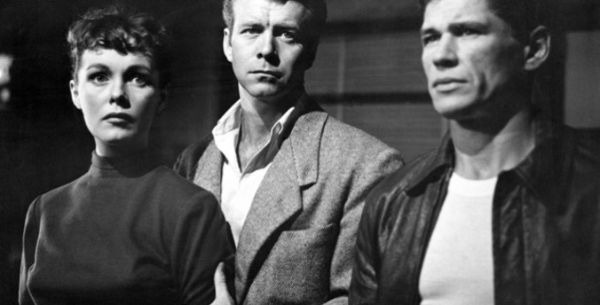
The picture doesn’t waste any time introducing us to a rash of small-time bank jobs pulled by a trio of recently escaped cons led by Ted de Corsia. But with police roadblocks all across California, they seek asylum with one of their old compatriots on the outside. Gene Nelson is making an earnest go at the straight and narrow but the local detective (Sterling Hayden) lives by the credo, “once a crook, always a crook.” In Andre de Toth‘s fatalistic tale of heightened urban realism, your past inevitably seems to come back to haunt you.
Riot in Cell Block 11 (1954)
It’s a long story, but having spent a stint in prison, producer Walter Wanger came out on a crusade for prison reform. What feels like an exploitative crime drama with incarcerated men vying for bargaining rights over a warden (Emile Meyer), quickly becomes a far more nuanced and sobering examination of our federal institutions. Led by the seasoned and resolute Neville Brand, and kept punchy and entertaining by Don Siegel, this is one of the preeminent prison pictures. Crucially, it actually considers the flawed system and gives the prisoners a human face just as it acknowledges a warden trying to maintain some semblance of merciful law and order.
Pushover (1954)
It’s easy to write off Pushover as a cheap Double Indemnity facsimile. It’s true we have Fred MacMurray playing a corrupt cop scheming to get a load of hot money for himself. His accomplice, in this case, is the fur-draped moll of a fugitive gangster (Kim Novak). In her debut, Novak is already putting her husky delivery to good use, but she’s no Phyllis Dietrichson. It’s as if with the dawning of the 1950s, femme fatales had changed with the times, more passively aloof but still deadly.
While The City Sleeps (1956)
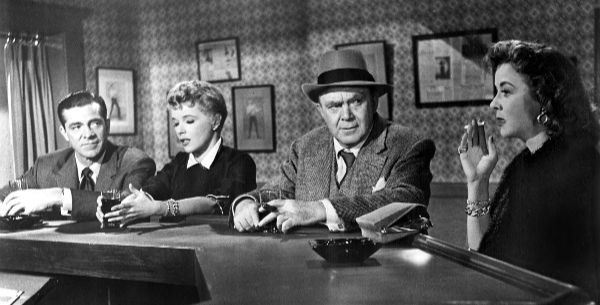
This late period Fritz Lang picture has an epic ensemble who are all employed by mega news corporation Kyne Inc. In the wake of a rash of murders by the local “Lipstick Killer” and then the sudden death of Kyne’s founder, there’s a major shakeup. His spiteful son (Vincent Price) takes over and turns the business into a “survival of the fittest” charade to catch the killer. The network’s news anchor (Dana Andrews) looks on as his colleagues, including George Sanders, Thomas Mitchell, and Ida Lupino, form alliances and stab each other in the back in their efforts to win the coveted position.
Murder by Contract (1958)
Martin Scorsese always mentions Murder by Contract in relation to the workout regimen of Travis Bickle in Taxi Driver. Because his origins can be found in the disciplined lifestyle of this movie’s contract killer named Claude (Vince Edwards). It’s true he’s one of the most intriguing hitmen in recent memory. He considers himself to be a “superman,” and as such his beliefs come off as surprisingly existential for someone in his line of work. His latest client flies him out for a job in sunny Southern California and he’s as methodical as ever in his preparation. Of course, even a professional like himself can’t be right all the time.
The Crimson Kimono (1959)
Sam Fuller grabs us with the indelible images of a hooker running through the streets of L.A. chased by an unknown assailant. Although it masquerades as a police procedural guided through Little Tokyo by Glenn Corbett and James Shigeta, it quickly becomes so much more. After our buddy cops both fall for the beautiful young artist named Chris (Victoria Shaw), a potential witness in their case, a love triangle forms. With a grand finale during the cacophony of the annual “Nisei Week Festival,” Fuller delivers on the gritty noir thrills while offering a groundbreaking commentary on race. If you don’t see any of these movies, at least do yourself a favor and search out The Crimson Kimono!
What is your favorite film noir of the 1950s? Do you think there is a specific film that marks the end of classic noir?
Does content like this matter to you?
Become a Member and support film journalism. Unlock access to all of Film Inquiry`s great articles. Join a community of like-minded readers who are passionate about cinema - get access to our private members Network, give back to independent filmmakers, and more.
Tynan loves nagging all his friends to watch classic movies with him. Follow his frequent musings at Film Inquiry and on his blog 4 Star Films. Soli Deo Gloria.













